Taoist Diet: Bigu – “Avoiding Grains”
“The Daoist Immortals are often described as “abstaining from grain” (bigu) as part of their training and progression in the Dao… Likewise, the “abstention from grain” of Saints must be seen to be a fundamental technique of achieving immortality, perhaps only inferior to a magical plant or elixir that would instantly fulfill the same function as the practice of bigu.” (Dannaway, Frederick R. (2009)Yoked to Earth: A Treatise on Corpse-Demons and Bigu)
The “cutting off” of grains, which were the basic staple food for the peasants, was a rejection of the sedentary life and the peasant condition as such. This refusal should not solely be interpreted in the light of the miseries endured by farmers, but also in a much more fundamental way. Agriculture has occasioned, since Neolithic times, a radical break with the way of life that prevailed for almost the entire prehistory of humankind. Agriculture has also been the main culprit of the imbalances of human civilization over the last ten thousand years or so: the systematic destruction of the natural environment, overpopulation, capitalization, and other evils that result from sedentariness. (Schipper, Kristofer (1993), The Taoist Body, translated by Karen C. Duval, University of California Press. p. 170)
“What becomes evident in the study of the tensions between Confucians and Daoists is a fundamental difference in their assessments of the prehistorical period of China. The Confucian’s viewed primordial times as period of starvation, of violence and wilderness, to loosely paraphrase and translate Levi (1982), contrasted to the Daoist view of a golden-age of uncontrived Eden-like bliss. “Zhuangzi praises that idyllic age with these words: ‘Spirits and gods show their good will and nobody dies before his time’” (Levi 1982). This is anathema to the Confucian view that it took a civilizing divine-potentate to rescue humanity from it’s own ignorance and helplessness in a brutal wilderness. This expresses a fundamental cosmological orientation that is the foundation for much of the social movements in China, perhaps even into modern times.“ Ancient man imbibed dew” and “fed on primordial breath and drink harmony” and ate not the toilsome, vulgar crops of the red dust that are exemplified in the Five Sacred Grains (wuku).” (Dannaway, Frederick R. (2009)Yoked to Earth: A Treatise on Corpse-Demons and Bigu)
Ge Hong(c. 320 CE), author of the Baopuzi, literally “[Book of the] Master Who Embraces Simplicity”, chronicles the effects of grain avoidance:
I have personally observed for two or three years men, who were foregoing starches, and in general their bodies were slight and their complexions good. They could withstand wind, cold, heat, or dampness, but there was not a fat one among them. I admit that I have not yet met any who had not eaten starches in several decades, but if some people cut off from starches for only a couple of weeks die while these others look as well as they do after years, why should we doubt that the (deliberate) fasting could be prolonged still further? If those cut off from starches grow progressively weaker to death, one would normally fear that such a diet simply cannot be prolonged, but inquiry of those pursuing this practice reveals that at first all of them notice a lessening of strength, but that later they gradually get stronger month by month and year by year. Thus, there is no impediment to the possibility of prolongation. All those who have found the divine process for attaining Fullness of Life succeeded by taking medicines and swallowing breath; on this they are all in perfect agreement. A moment of crisis, however, generally occurs at an early stage when medicines are being taken and starches abandoned and it is only after forty days of progressive weakening, as one uses only holy water and feeds solely on breath, that one regains strength. (15, tr. Ware 1966:246-7)
Chapter 6, “The Meaning of ‘Subtle'” (微旨), equates grain avoidance with the supernatural abilities of a xian transcendent.
Therefore, by giving up starches one can become immune to weapons, exorcize demons, neutralize poisons, and cure illnesses. On entering a mountain, he can render savage beasts harmless. When he crosses streams, no harm will be done to him by dragons. There will be no fear when plague strikes; and when a crisis or difficulty suddenly arises, you will know how to cope with it. (6, tr. Ware 1966:114-5)
While traditional Chinese mythology depicted cooking and agriculture as key elements of civilization, the Daoists created a “counter-narrative” to justify the idea of grain avoidance. (Campany,Robert Ford. Hong Ge. 2002. To live as long as heaven and earth: a translation and study of Ge Hong’s traditions of divine transcendents. Berkeley: University of California Press. p. 16)
For example, the Confucianist Xunzi and Legalist Hanfeizi describe Suiren as cultural folk hero:
In the earliest times … the people lived on fruit, berries, mussels, and clams – things that sometimes became so rank and fetid that they hurt people’s stomachs, and many became sick. Then a sage appeared who created the boring of wood to produce fire so as to transform the rank and putrid foods. The people were so delighted by this that they made him ruler of the world and called him the Fire-Drill Man (Suiren 燧人). (Hanfeizi 49, tr. Campany 2005:15)
In contrast, the Zhuangzi “Mending Nature” chapter mentions Suiren first in a list of mythic sage-rulers – Fu Xi, Shennong, Yellow Emperor, Tang of Shang, and Yu the Great traditionally credited with advancing civilization – but depicts them as villains who began the destruction of the primal harmony of the Dao. Campany (2005:16) calls this “the decline of Power and the ever-farther departure from the natural Dao into systems of social constraint and what passes for culture.”
The ancients, in the midst of chaos, were tranquil together with the whole world. At that time, yin and yang were harmoniously still, ghosts and spirits caused no disturbances; the four seasons came in good time; the myriad things went unharmed; the host of living creatures escaped premature death. … This condition persisted until integrity deteriorated to the point that Torchman [Suiren] and Fuhsi arose to manage all under heaven, whereupon there was accord, but no longer unity. Integrity further declined until the Divine Farmer and the Yellow Emperor arose to manage all under heaven, whereupon there was repose, but no longer accord. Integrity declined still further until T’ang and Yu arose to manage all under heaven. They initiated the fashion of governing by transformation, whereby purity was diluted and simplicity dissipated. (tr. Mair 1994:149)
“Now, the people of mysterious antiquity, they reached old age because they remained in leisureand never ate any grains.” (From Most High Numinous Treasure)
The Yellow Turban Rebellion was initiated by Daoist adepts who proposed an alternative world view to restructure society from the Yellow Heaven. The struggle was not against society per se as much as it was frustration at the loss of an “idealized, primitive agricultural community…or a nostalgia for a prefeudal or Neolithic communal society” (Girardot, N.J. 1983. Myth and Meaning in Early Taoism. Berkeley: University of California Press.)
“Retiring to a mountain, then as now, would require an inordinate amount of training, planning and discipline. Following Maslow, the aspirant’s first concern, especially in times of famine and strife, would be nourishment. This essentially puts the person back in the same situation as before the advent of agriculture. The Daoist masters in some sense decide that in the face of continually crumbling social orders, with intermittent prosperity, to have done with the charade and to face the situation on their own terms. To be able to minimize or abstain from food (especially the Five Grains) and to thrive by way of subtle arts would be tantamount to freedom from the feudal system.” (Dannaway, Frederick R. (2009)Yoked to Earth: A Treatise on Corpse-Demons and Bigu)
“The Immortals always are just off in the distance, just a bit further out to sea, just a bit higher up the mountain. Beyond modern constructs that burden myths, there are examples of the Shuli, “the cooked ones” and the Shengli, “the raw ones of Limu mountains”. The “raw ones” live in the impenetrable heights of the mountains beyond the reach of the civilizing hearth and beyond them at the top of Mt. Limu are the immortals, which are as far away as possible from civilization while still remaining on earth. The proximity to civilization, like graded levels of health or longevity the higher up the mountain, often determines the vitality of Immortals and power plants. Levi (Lévi, Jean. 1982. L’abstinence des céréales chez les Taoïstes. Études chinoises 1: 3–47.) expresses this in the context of a “refusal of orthodoxy” in favour of a primitive Golden-age where Daoist ‘dietetics are not a collection of good house-woman recipes or a proto-scientific hygienic diet’ but an act of protest. ” (Dannaway, Frederick R. (2009)Yoked to Earth: A Treatise on Corpse-Demons and Bigu)
During the reign of Emperor Cheng of the Han, hunters in the Zhongnan Mountains saw a person who wore no clothes, his body covered with black hair. Upon seeing this person, the hunters wanted to pursue and capture him, but the person leapt over gullies and valleys as if in flight, and so could not be overtaken. The hunters then stealthily observed where the person dwelled, surrounded and captured him, whereupon they determined that the person was a woman. Upon questioning, she said, “I was originally a woman of the Qin palace. When I heard that invaders from the east had arrived, that the King of Qin would go out and surrender, and that the palace buildings would be burned, I fled in fright into the mountains. Famished, I was on the verge of dying by starvation when an old man taught me to eat the resin and nuts of pines. At first, they were bitter, but gradually I grew accustomed to them. They enabled me to feel neither hunger nor thirst; in winter I was not cold, in summer I was not hot.” Calculation showed that the woman, having been a member of the Qin King Ziying’s harem, must be more than two hundred years old in the present time of Emperor Cheng. The hunters took the woman back in. They offered her grain to eat. When she first smelled the stink of the grain, she vomited, and only after several days could she tolerate it. After little more than two years of this [diet], her body hair fell out; she turned old and died. Had she not been caught by men, she would have become a transcendent. (tr. Campany 2005:38)
As the Dayou zhang (Verse of Great Existence) says:
“The five grains are chisels cutting life away,
Making the five organs stink and shorten our spans.
Once entered into our stomach,
There’s no more chance to live quite long.
To strive for complete avoidance of all death
Keep your intestines free of excrement!”
Avoiding grains was the primary medical cure for eliminating the sanshi 三尸 “Three Corpses” or sanchong 三蟲 “Three Worms”, which are evil spirits believed to live in the human body and hasten death. Livia Kohn (Kohn, Livia (1993), The Taoist Experience: An Anthology, State University of New York Press. p. 148) describes the Three Corpses as “demonic supernatural creatures who feed on decay and are eager for the body to die altogether so they can devour it. Not only do they thus shorten the lifespan but they also delight in the decaying matter produced by the grains as they are digested in the intestines. If one is to attain long life, the three worms have to be starved, and the only way to do so is to avoid all grain.”
The three worms, or again three corpses. depending on the text, reside in the head, torso and lower body (three elixir fields dantian) and are assisted by a pernicious group of nine worms that do everything they can “to incite people to evil or ill.” Upon his death the host is cast into hells and the worms are rewarded by feast of the poor soul’s corpse. The Upper Worm is named Peng Ju, is white and blue color, and focuses on tempting the adept to long for delicious food and other “physical”delights. The Middle Worm, Peng Zhi,is white and yellow and incites the adept to greed and excessive emotions of joy and anger. The Lower Worm, Peng Jiaois white and black conspires to entice the mystic to the worldly pleasures of sex, alcohol and fancy attire (Eskildsen 1998) or vitality-sapping wet dreams (Eskildsen, Stephen. 2004. The Teachings and Practices of the Early Quanzhen Taoist Masters. Albany: State University of New York.)
The Chu sanshi jiuchong baoshen jing (Scripture on Expelling the Three Corpses and Nine Worms to Protect Life) prob. 9th century gives the following details:
1. The Upper Corpse, Pengjulives in the head, symptoms of its attack include a feeling of heaviness in the head, blurred vision, deafness, and excessive flow of tears and mucus.
2. The middle corpse, Peng Zhi, dwells in the heart and stomach. It attacks the heart and makes its host crave sensual pleasures.
3. The lower corpse, Peng Jiao, resides in the stomach and legs. It causes the Ocean of Pneuma ((qihai) corresponds to lower dantian) to leak, and make host lust after women.
Nine worms, which cause corpse-malady (shih-chai) or corpse-exhaustion (shih-lao) [(Strickmann 2002):
1. The “ambush worm” (fuchong) saps people’s strength by feeding off their essence and blood.
2. The “coiling worm” (huichong) infests the body in pairs of male and female that live above and below the heart, consuming the host’s blood.
3. The “inch-long white worm” (cun baichong) chews into the stomach, weakening the inner organs and damaging the digestive track
4. The “flesh worm” (rouchong) causes itching and weakens the sinews and back.
5. The “lung worm” (feichong) causes coughing, phlegm buildup, and difficulty in breathing.
6. The “stomach worm” (weichong) consumes food from its host’s stomach, causing hunger.
7. The “obstructing worm” (gechong) dulls the senses induces drowsiness and causes nightmares.
8. The “red worm” (chichong) causes stagnation of the blood and pneuma, heaviness in the waist, and ringing in the ear.
9. The “wriggling worm” (qiaochong) causes itching sores on the skin and tooth decay.
(Pregadio, Fabrizio, ed. 2008. The Encyclopedia of Taoism. RoutledgeCurzon.)
The Taishang shengxuanjing says a fast of 30 days kills the Upper worm, 60 the Middle, 100 and so on as mentioned, but that even after the adept purges the body he will still feel the urge to eat. This is explained that the refined essence of grains causes a slimy membrane that coats the Five Viscera, Six Bowels, the joints, muscles and vessels but perseverance for 20-30 more days will make it disappear (as will moles, scars and blemishes).
The Japanese medical texts are full of similar demon-worms, some requiring magical or potent treatment or vigils on Koshin day. These are from an anonymous 16th century Osakan medical text the, Harikikigaki:
Lectins are types of proteins commonly found in nature in foods such as fruits, vegetables, and seafood, but especially grains, beans and seeds.
Some of the lectins consumed in everyday foods act as chemical messengers that can in fact bind to the sugars of cells in the gut and the blood cells, initiating an inflammatory response. In wheat, gliadin, a component of gluten and an iso-lectin of wheat germ agglutinin (WGA), is capable of activating NF kappa beta proteins which, when up-regulated, are involved in almost every acute and chronic inflammatory disorder including neurodegenerative disease, inflammatory bowel disease, infectious and autoimmune diseases. (Jones, David S., ed.. Textbook of Functional Medicine. Gig Harbor:The Institute for Functional Medicine, 2005, 303.)
Aglaée the Paleo Dietician says, “Some people may experience diarrhea, nausea, bloating, reflux or vomiting when ingesting lectins. Whether you experience symptoms or not, lectins can damage your gut lining, impair nutrient absorption, compromise your gut flora and interfere with your immune system”.
Lectin has a protective role for the plant by irritating your digestive system so you don’t digest its seeds, which is needed for the reproduction and survival of their specie. Some people may experience diarrhea, bloating, nausea, reflux or vomiting when ingesting lectins. Whether you experience symptoms or not, lectins can damage your gut lining, impair nutrient absorption, compromise your gut flora and interfere with your immune system. Lectins are also involved in impaired intestinal permeability, or leaky gut, which allows undigested particles (pooh!) to pass from your intestines into your blood and causing problems.
Lectins which can damage the gut lining, which increases inflammation and is a newly discovered feature of not only autoimmune disease but also insulin resistance and liver pathology.
Wheat contains a lectin called wheat germ agglutinin, or WGA. Lectins are sticky little buggers and the WGA goes into your small intestine and gloms onto the brush border. It then tricks your body into taking it across the border of your intestine intact, where it is seen as a foreign invader by your immune system. Antibodies are created in response to the lectins, and unfortunately, lectins often look a lot like other parts of your body. They may look like cells in your brain, pancreas, etc., so the same antibodies that were created to attack the lectin will actually go launch attacks on your own body. This is where autoimmune issues arise, like diabetes type 1, celiac disease, lupus and multiple sclerosis. (http://www.paleoplan.com/2011/03-30/why-no-grains-and-legumes/)
There is an abundance of literature from the most prestigious journals that lectins such as WGA initiate allergic reactions in the gut causing the release of IL-4, IL-13, and histamine from human basophils producing noticeable allergic symptoms. (Watzl B, Neudecker C, Hansch GM, Rechkemmer G, Pool-Zobel BL. Dietary wheat germ agglutinin modulates ovalbumin-induced immune responses in Brown Norway rats. Br J Nutr. 2001 Apr;85(4):483-90.) (Eur. J. Immunology. 1999. Mar;29(3):918-27.)
WGA has also shown to interfere with protein digestion and increase gut permeability. (Falth-Magnusson K., et al. Elevated levels of serum antibodies to the lectin wheat germ agglutinin in celiac children lend support to the gluten-lectin theory of celiac disease. Pediatr Allergy Immunol. May 1995; 6(2): 98-102.) (Hollander D, Vadheim CM, Brettholz E, Pertersen GM, Delahunty T, Rotter JI. Increased intestinal permeability in patients with Crohn’s disease and their relatives. A possible etiologic factor. Ann Intern Med, December 1986; 105(6):883-85.)
GRAINS ARE ADDICTIVE:
Groups led by Zioudrou (1979) and Brantl (1979) found opioid activity in wheat, maize and barley (exorphins), and bovine and human milk (casomorphin), as well as stimulatory activity in these proteins, and in oats, rye and soy. Cereal exorphin is much stronger than bovine casomorphin, which in turn is stronger than human casomorphin. Mycroft et al. (1982, 1987) found an analogue of MIF-1, a naturally occurring dopaminergic peptide, in wheat and milk. It occurs in no other exogenous protein… Since then, researchers have measured the potency of exorphins, showing them to be comparable to morphine and enkephalin (Heubner et al. 1984), determined their amino acid sequences (Fukudome &Yoshikawa 1992), and shown that they are absorbed from the intestine (Svedburg et al.1985) and can produce effects such as analgesia and reduction of anxiety which are usually associated with poppy-derived opioids.(Greksch et al.1981, Panksepp et al.1984)… One of the most striking phenomena in these studies is that patients often exhibit cravings, addiction and withdrawal symptoms with regard to these foods (Egger 1988:170, citing Randolph 1978; see also Radcliffe 1987:808-10, 814, Kroker 1987:856, 864, Sprague & Milam 1987:949, 953, Wraith 1987:489, 491). Brostoff and Gamlin (1989:103) estimated that 50 per cent of intolerance patients crave the foods that cause them problems, and experience withdrawal symptoms when excluding those foods from their diet. Withdrawal symptoms are similar to those associated with drug addictions (Wadley, Greg; Martin, Angus “The Origins of Agriculture: A Biological Perspective and a new Hypothesis” Australian Biologist 6: June 1993 pp. 96-105)
“The adoption of cereal agriculture and the subsequent rise of civilisation have not been satisfactorily explained, because the behavioural changes underlying them have no obvious adaptive basis… The answer, we suggest, is this: cereals and dairy foods are not natural human foods, but rather are preferred because they contain exorphins. This chemical reward was the incentive for the adoption of cereal agriculture in the Neolithic. (Wadley, Greg; Martin, Angus “The Origins of Agriculture: A Biological Perspective and a new Hypothesis” Australian Biologist 6: June 1993 pp. 96-105)
In the 2ndcent BC Huainanzi quotes a common saying: “Those who eat cereals are intelligent, but they die early, those who don’t eat them at all are immortal”(Lévi, Jean. 1982. L’abstinence des céréales chez les Taoïstes. Études chinoises 1: 3–47.)

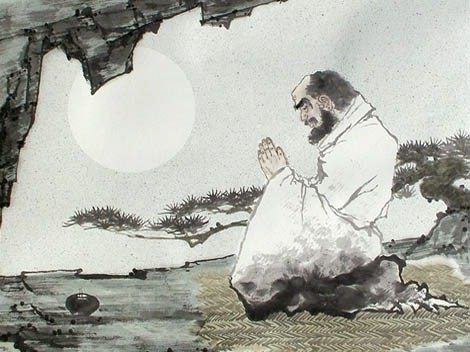

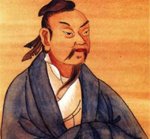



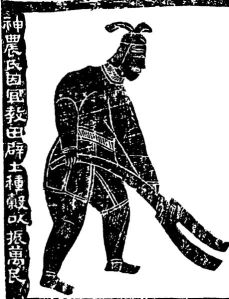
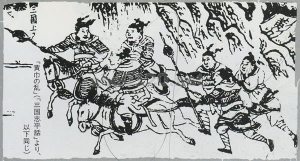
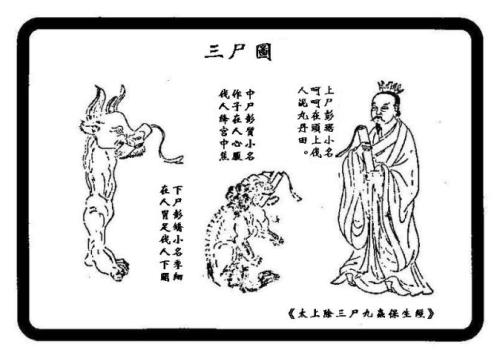

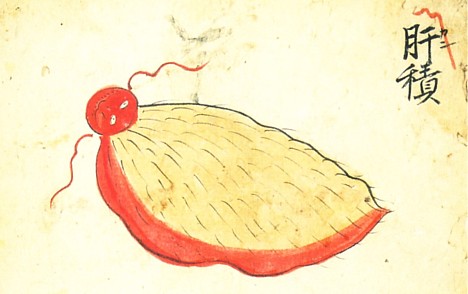




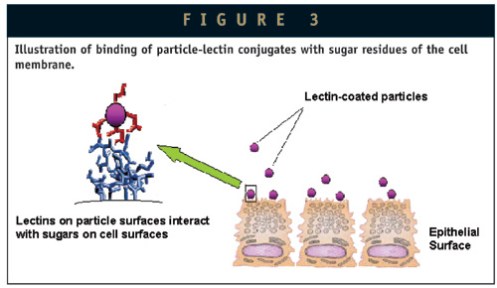
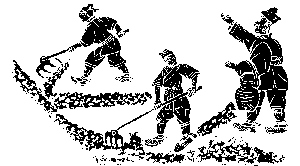
This is a feast of delicious information – thank you!
As I say to my friends: ‘Grains? Food of the oppressor. No thanks!’
I hadn’t realised the Taoists were *so* philosophically opposed to them, but as soon as I realised that the Confucianists were into them, I knew there was going to be trouble. That realisation, whilst reading a good dose of Derrick Jensen, brings me here, four months into a grain-free, low carb, high fat, barbaric diet.
Checking my pulses, keeping an eye on the Spleen and all, but feeling great.
Thanks for all these quotes – they’re a delight, especially: ‘On entering a mountain, he can render savage beasts harmless. When he crosses streams, no harm will be done to him by dragons.’
Marvellous. Thanks for gathering all this.
Tom
You’re very welcome Tom. “Right on” in regards to your diet. I’m 3 months into my Barbaric diet, after 10 years of vegetarianism. I was blown away when I came across Bigu. The correlation to modern research on grains is spot on. I’ve studied the Tao for about 15 years now and I introduced to Bigu just yesterday! Those ancients never cease to amaze…
yes, fantastic post! I too and totally stunned to learn of Bigu, and elated! I’m sure you’re familiar with my friend Nora Gedgaudas’ book, “Primal Body – Primal Mind” right?! I sent her a link to this posting! 🙂
I am indeed – I think it was the only paleo book I bought 🙂
Is this diet like the Paleo one? My problem with that is the source of protein. My ancestors like most people got a lot of protein from insects. I am allergic to shellfish so I am not supposed to eat insects. And wild animals have like 2% body fat until the organic cows and pigs and turkeys etc. I wanted to do the Paleo thing since I agree agriculture is the root of most evil but it really didn’t seem to be the diet my ancestors would have eaten. No aurochs, no bugs, no meat from hunting, all from pastoralism, which is just another form of agriculture to me. I could not figure out how to do Paleo the real way.
I was veggie for 20 years and I am so glad I eat meat again. My main “rush” food is spirulina. I work with what my body tells me. Dairy and eggs and shellfish and sugar out. Aside from Irish grass fed butter. Body likes that. I think self medicating with carbs for depression or pain might be OK as the world is hard. I am on the fence about self medicating. We do not live in a healthy human society. We are wounded deeply and have no real support. When the “system” fails and there is no one there and it’s just you, homeless, sick, cold, with rashes and migraines and there is no money for organic food and no way to bathe (I have been in this situation, most recently due to severe MCS) self medicating might be the way to go. With there being no tribal security and no safe food/air/water and being unable to have contact with almost all humans due to their chemical addictions (fragrance, toothpaste, deorderant, clothes with pesticides, shampoo, clothes with dyes, car exhaust (esp when the bike in traffic), and much much more), I am not sure what the compassionate thing is to do with a dollar. Buy 1 oz of organic turmeric or a candy bar? The turmeric might help with pain and other medical needs but that has to be long term for an effect. A candy bar gives temporary joy. When homeless and shunned by the world for MCS and having no help and a black bear rocking the car you sleep in and you are disabled and cannot walk and have no phone and cannot drive and no doctor, well.
I have been thinking it is not long life I want, but quality life. I love Daoism til it gets all Eternal Masters. I like do nothing against nature.
But I understand that there were men and movements of their times. Confucius grew up warlord Hell.He wanted to create order so there would be peace and safety. I believe he meant well. Daosim is the pendulum swinging back to “what about human desire, what about nature, what about following what you feel?” I do think Taoism has much connection with indigenous beliefs of that place, but romanticized like how Amerikkkan New Agers idealize Native Americans as a fiction of the past they created. Both made sense at the time, to maintain some balance. Confucius thought based on his early life “These humans are nuts and need rules so no one gets hurt.” He grew up in a very bloody time. Taoism shows up saying “We need natural chaos to have creativity and it will all work itself out.” Then it got into rules and as strictly dogmatic as Confucius. Which anything with humans involved tends to do. Become meaningless dogma, with the context gone.
What I find interesting it that in China people don’t in general see picking a side. They are Taoists and follow Confucius. Plus say they are also Buddhist. The need to label and impose and pick sides doesn’t come into play as the culture has all elements.
Add super capitalist Communism the is ruining the land and people’s health while taking over the global economy, I am not sure how that all adds up.
Technically, it would be considered “paleo” since no agriculture is involved. I was a vegetarian for 10 years until last summer, I am very fortunate that I can obtain grass fed beef from farmers markets near me. Granted, pasture raised cows are post agriculture, but they are eating a pre-agriculture diet.
Everybody self medicates in their own way to deal with contemporary society. I guess what matters is how destructive our particular medication is, and that’s still relative depending on what you value.
As John Lennon said “Whatever get’s you through the night, it’s alright.”
Labels are B.S. We are all on our own journey and we express our uniqueness, this includes diet, philosophy and spirituality.
Explore!!!!!!!!!!!!!!!!!!
Is barbaric diet the same as caveman diet? Or the nourishing traditional foods?
Are you referring to the work of Weston A. Price? The Nourishing Traditions (Weston Price diet) is based on indigenous diets, but not neccesarily Caveman, (NT uses dairy products), but it’s very similar.
Heather Awen, I really enjoyed your reply especially “We need natural chaos to have creativity and it will all work itself out.”
Is potato permissible?
I believe so, the ancient Taoists seemed to only have spoke against grains, but if you are going for a ketogenic, fat-based diet, the heavy starch in potatos could add to much sugar for you….
I am now a non-grain, non-potato, no sugar, no dairy vegetarian (or vegan) daoist/practioner of yoga and i feel just great. Abstinence from grains and all animal products is very benevolent for the body and the way of the original Divine Order (compare the story of the offering of Kain). I am very happy with wild fruits, vegetables, nuts and some dried foods. Actually it is more than enough to feel satisfied. No grains or (any staple goods) needed.
What do you do for protein? How long have you been doing this? If you don’t respond I’ll probably just assume you have died from starvation.
I just want to say that I really enjoyed this unique post. It contains so much that I’m interested in: rewilding and pre-agriculture life, Taoism, diet and anarchy. You’re really awesome.
this could be why ppl used spruoted grains and nuts
Thanks for sharing. Raw dairy however, does a body good though.
Absolutely it does👍